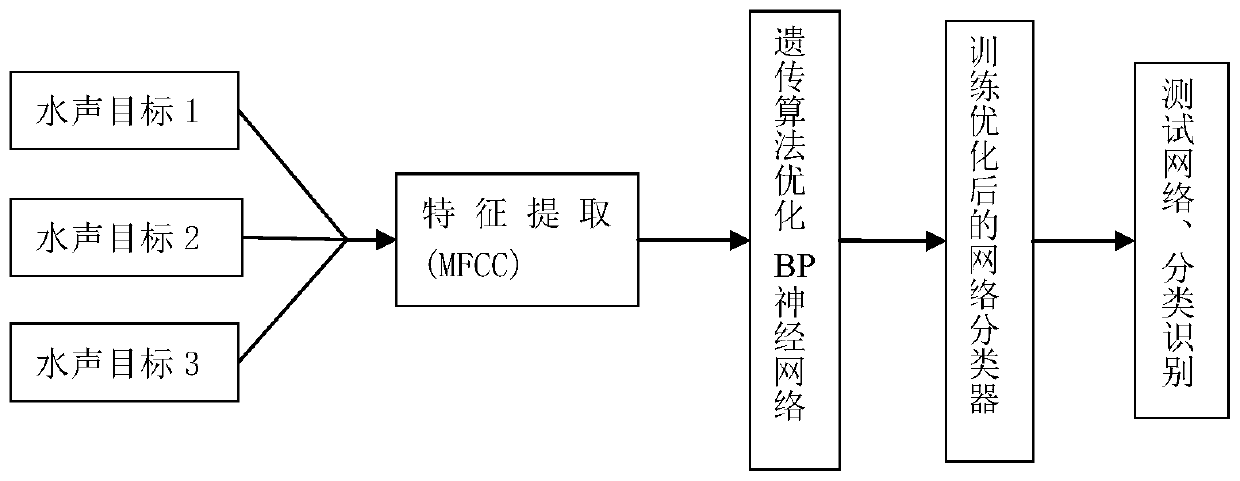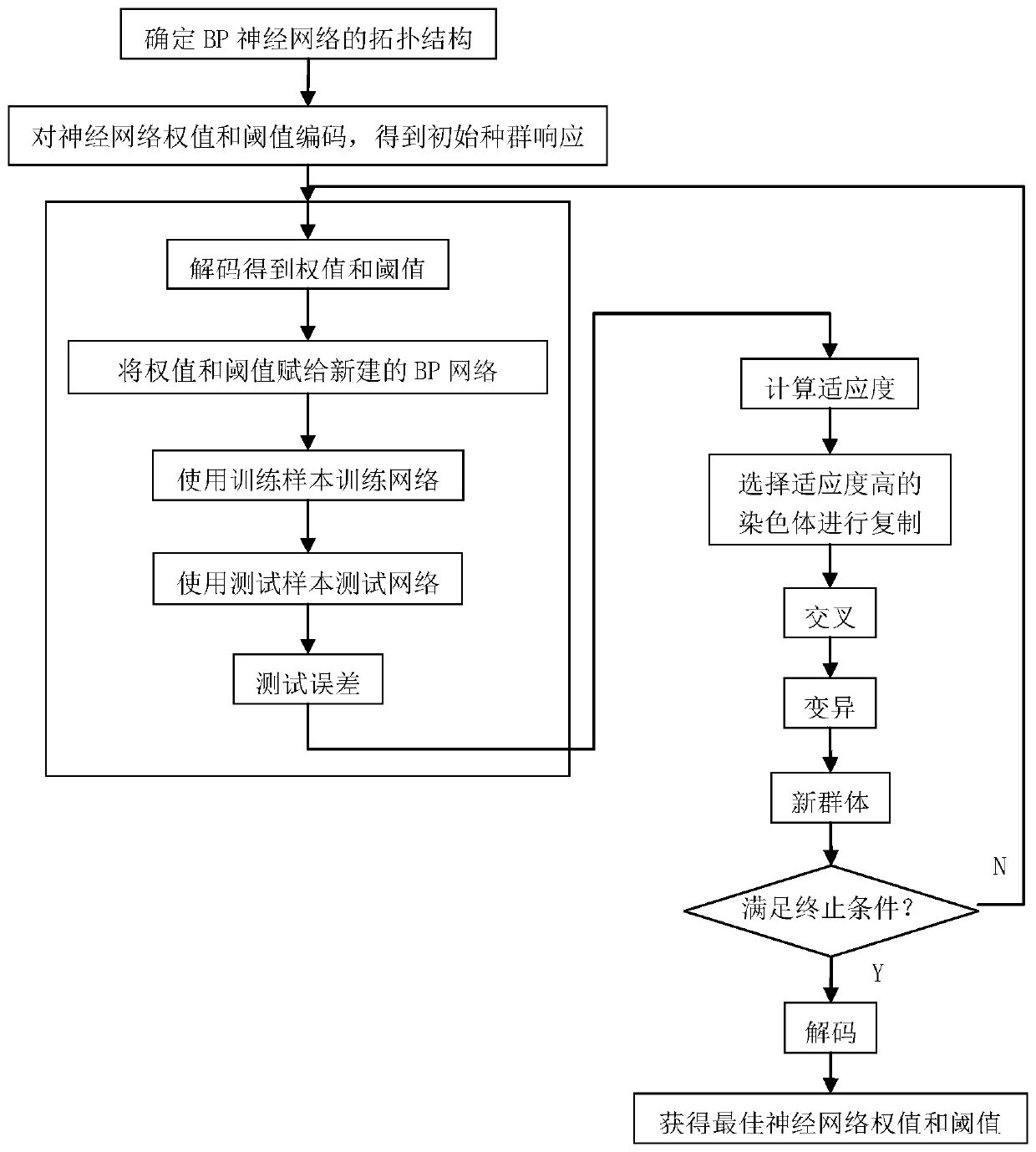Underwater acoustic target recognition method based on genetic algorithm optimized BP neural network
A BP neural network and genetic algorithm technology, applied in the field of underwater acoustic target recognition, can solve the problems of local extremum, over-learning, slow convergence speed, etc., and achieve the effect of stable recognition performance and high recognition rate
- Summary
- Abstract
- Description
- Claims
- Application Information
AI Technical Summary
Problems solved by technology
Method used
Image
Examples
Embodiment
[0088] Step 1: Read 3 sets of underwater acoustic target data, each set of 15 audio files, and use the melcepst.m function of the voicebox toolbox in MATLAB to extract 12-dimensional underwater acoustic feature signals for the 3 sets of underwater acoustic targets. The three groups of underwater acoustic feature signals are marked with 1, 2, and 3 respectively, and the extracted signals are stored in the data1.mat, data2.mat, and data3.mat database files respectively. Each set of data has 13 dimensions, and the first dimension is the category identification , and the last 12 dimensions are underwater acoustic feature signals.
[0089] Step 2: Extract the above three files, synthesize the data in the files into a data matrix, take the 2-13 dimensional data of the data as the input P, and the 1st dimensional data as the output T. To classify three kinds of underwater acoustic targets, change the output T from 1D to 3D, so that the output T of the network algorithm can be one o...
PUM
 Login to View More
Login to View More Abstract
Description
Claims
Application Information
 Login to View More
Login to View More - R&D
- Intellectual Property
- Life Sciences
- Materials
- Tech Scout
- Unparalleled Data Quality
- Higher Quality Content
- 60% Fewer Hallucinations
Browse by: Latest US Patents, China's latest patents, Technical Efficacy Thesaurus, Application Domain, Technology Topic, Popular Technical Reports.
© 2025 PatSnap. All rights reserved.Legal|Privacy policy|Modern Slavery Act Transparency Statement|Sitemap|About US| Contact US: help@patsnap.com



